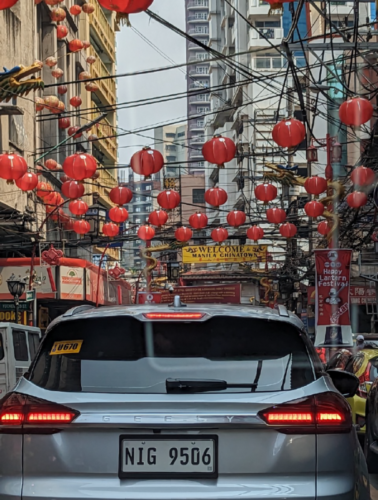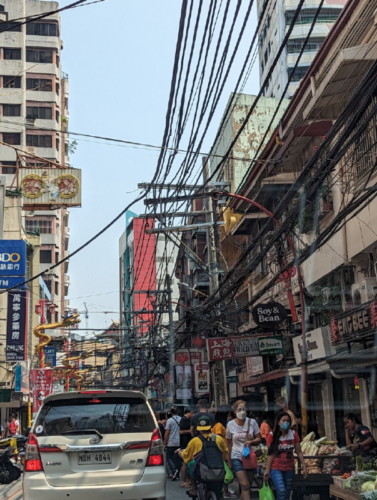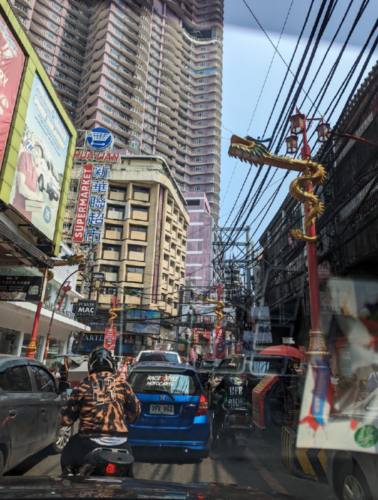February 27, 2023: It’s the oldest Chinatown in the world, possibly founded in 1700. There’s no place to walk except the street. The sidewalks are all taken by vendors. You can almost hear them barking the names of their goods. There are feng-shui shops, in keeping with the trend of geomancy, and bakeries to supply the masses with hopia and siopao.
Wires hanging from posts and ready to fall and electrocute pedestrians. Huge golden dragons powering down from above. Signs nailed on every conceivable wall. It’s all in defiance of safety and building regulation. There’s nothing like it anywhere in the world.
There were accessorias before, 2-story Spanish-era wooden buildings, but they are now all gone, taken over by concrete high rises. The Chinatown I knew from the 1960s was a different world, one from a different century. The streets were covered with cobblestones. (Who took them when the streets were cemented?) There were dark alleys with reportedly massage and prostitution joints. (They were, as I found out when a group of us campus intellectuals and BMOCs from the University entered one of them one night in a youthful adventure.) Back in the late 1960s I used to walk with my son Norman, 4 years old, from Quiapo to Binondo, a distance of one mile, to my Tai chi chuan classes at 7 in the morning at Hua Eng Athletic Club.
My first Tai Ji Quan master at the time was Chan Bun Te, younger cousin of my Chinese godfather Chan Tek Lao. He was an impeccable and unforgiving teacher, gifted with an eye to details, and he corrected me mercilessly, until I was good enough to be told to go to the Luneta and practice with the Chinese devotees of this softest but most powerful of all arts that depended not on the physical but on the mystical Qi. Soon enough the Chinese group in front of the Manila Hotel acknowledged the excellence of my form and asked me to lead them. Tai Ji Quan is difficult to translate to English but it means Grand Ultimate Fist and that conveys a bit of the veneration it holds in Taoist China. Tai means a Man with a Center, Ji is the Extreme of Philosophies or Creation. The other master who took me in through the intercession of Johnny Chiuten was the lay Buddhist monk Lao Kim who trained as a priest in a temple in Fujian in 1880s-1890s. When he was a child of 6 or 7 his relatives, apparently rebels against the Ching, were massacred by the Manchu soldiers. Lao shifu was spared because he hid in a latrine. Emerging from hiding, the orphan walked among the dead. A couple of monks who were begging in the village took mercy on him and brought him to the chief abbot in the mountain temple and he was adopted as a novice and trained as a warrior in the deadly art of Kungfu along with teaching him the rituals and scriptures of Buddhism. Lao Kim studied for 2 decades with vengeance in his heart. One night he and a few of his friends escaped, hunted the killers of their relatives and murdered them in cold blood. To make a long story short, the lay monk escaped to Hongkong and eventually to the Philippines. At the port his only possession was grabbed by a thief and Lao Kim killed him with a finger stab to the heart. He was taken to prison and eventually released to the Chinese community because there was no evidence against him.
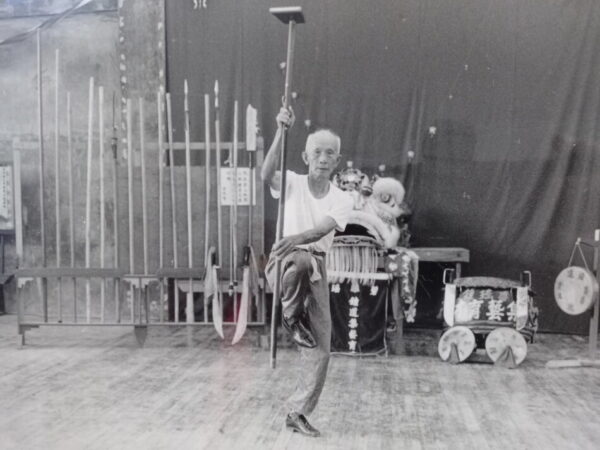
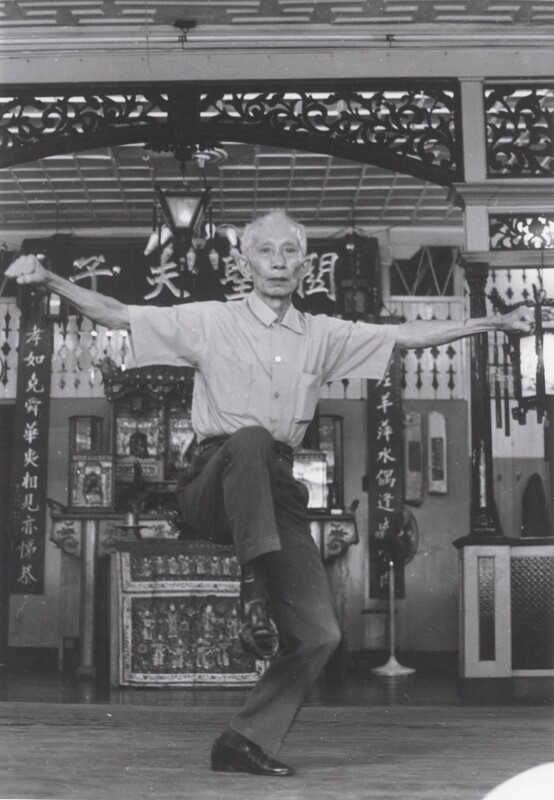
After studying Tai Ji Quan with Chan Bun Te, I was referred to Lao Yun Hsiao, the famous master from Taiwan. Of course I kept training with Lao Kim, the lay Buddhist monk from Fujian who taught me rare fist and weapons forms, among them, the legendary Guandao called Green Dragon from the epic Romance of the 3 Kingdoms, the 5-Sectional Steel Whip and the Hoe. There were other schools and masters but I was happy with my teachers. Lao Kim, in his late 70s, used to take me to the anniversary banquets of martial arts schools. People would come to our table and toast him. When Johnny Chiuten, his main disciple, was in town, he would take the old man to dinner after we practiced at Hua Eng. That was Johnny Chiuten’s master and mine. Lao shifu moved to Hongkong in the late 70s to direct fight scenes in movies and I migrated to the US and we maintained an irregular correspondence. I saw Lao Kim in Hongkong 3 times. He gave me an album of photographs and a secret recipe of 36 herbs. He passed when he was 114 years old at the millennium. As far as I know, there are only 2 living disciples left among the 4 or 5: Dr Jose Santiago “Jopet” Laraya, Johnny’s Beta Sigma brother, and me.
Every trip to Chinatown was always edged with danger because Binondo was populated by the detritus and the jobless of the city. You could imagine feral dogs and feral men picking salvageable stuff from garbage dumped at the curb. No kidding. Other Chinatowns — NY, San Francisco, Chicago, London — are so antiseptic and clean. Manila’s Chinatown is helter-skelter, a riot of humanity, a kind of dream from Alice’s Wonderland. You won’t find it anywhere in the world. Nobody could have thought it up or imagined it.
I am sorry I have no time to explore it. Well, I did visit a couple of times when Danny Go, the editor of Rapid, was alive. He used to treat me to dinner cooked by his mother at their apartment in Binondo. Now we’re all so busy going out to eat. One night it was Chinese, the next it was Filipino. Last night it was Spanish: tapas and sangrias, cheeses, hams and sausages and black paella (colored with squid ink). It reminded me of the family’s trip to Barcelona, Spain. I brought the printed text of my book of essays to edit but there’s simply no time, what with all the parties I have to attend while I am in the city. Tomorrow my brother Roland will send a driver to pick us up and bring us to the ylang-ylang farm in Estipona, Pura, Tarlac, 3-4 hours north, where we’ll stay until March 10. Perhaps we’ll go to Baguio, the summer capital and hill station, if Lolit asks for it. Perhaps I’ll be able to sit down and find some peace and quiet, who knows. I was invited to make a presentation on eastern healing at the University of the Philippines, so there’s another project to think about aside from the private and public lessons I have to teach. I guess I will wear that red mandarin jacket Mark Wiley gave me on my last birthday.
Chinatown traffic and street scenes:
